Ben Kerido
(5-6 Minute Read)

The year was 1915. The European continent was ravaged by the carnage of World War I, and hostilities spilled over into several other continents, including western Asia and the Middle East. Ottoman Turkey had formed an alliance with the Central Powers, namely Germany, Austria-Hungary, and Bulgaria, against the Triple Entente, more commonly known as the Allies. Accordingly, Turkey declared war on the United Kingdom, France, and later the United States, as well as other European nations.
Within the territory of the Turkish empire, however, another war was waged of an even more malicious and sinister nature. As the Turkish war machine mobilized, they took the opportunity to launch one of the most important and least discussed events of the twentieth century: the Armenian Genocide.
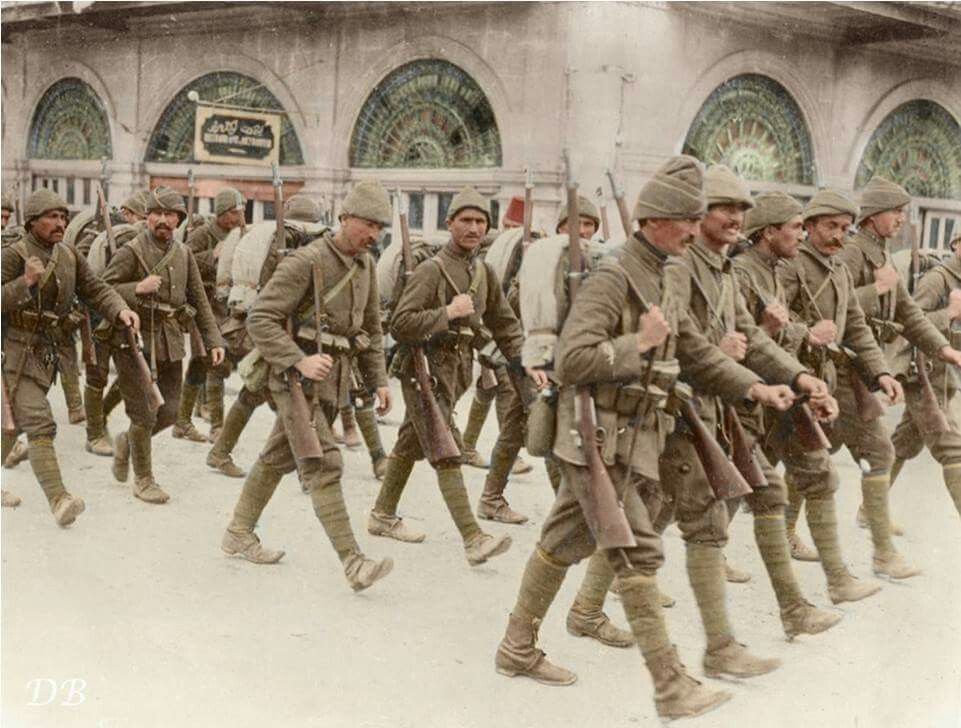
For the past few centuries, the Ottoman Turkish Empire had grown in strength and territory, absorbing Sephardi Jewish refugees from Spain and Portugal and also obtaining control of Armenian lands and the relevant Christian populations. Under the dhimmi system, the Moslem leadership had theoretically afforded certain protections for Jews and Christians provided they maintained a “second-class” type of status. In reality, what dhimmi actually meant is that the welfare of Jewish and Christian populations were subject to the whims of the local leadership. Some Moslem Turkish leadership was benevolent or at least benign to their minority populations. Others rulers were unfair, oppressive, or even down-right ruthless. And in the decades leading up to World War I, the Turkish treatment of their minorities, in particular the Armenian Christians living within their imperial territory, became increasingly hostile. Ostensibly, some attempts had been made by the government to grant the minority populations of Turkey with equal status, but the Moslem majorities ardently rejected such measures. During times of political unrest, hundreds of thousands of Armenians were slaughtered by Turkish and Kurdish forces in the half century leading up to 1915. Additionally, over half a million Moslem refugees from the First Balkan War in the beginning of the twentieth century were relocated to Armenian Christian territory, causing mistrust, jealousy, and conflict between the two populations.
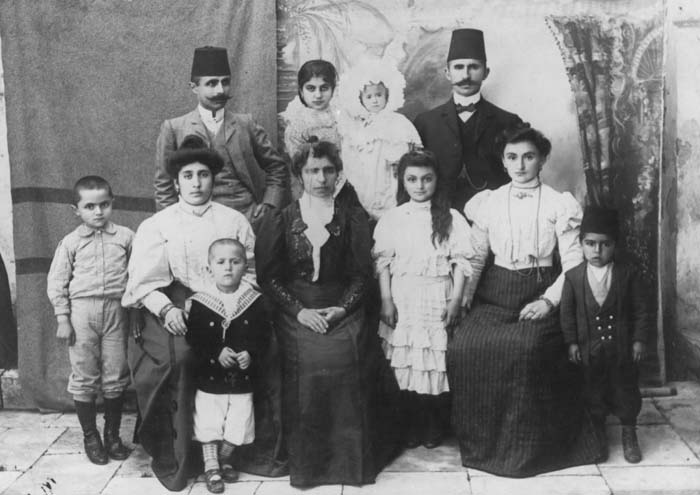
In 1915, as Turkey aroused its military might, the Armenians conscripted into the Ottoman armed forces were transferred into unarmed, non-combative “labor” battalions. In the Armenian city of Van, demands for thousands of young male conscripts for these “labor” battalions by Ottoman governor Jevdet Bey were seen as a precursor to mass execution. When the Armenian Christians balked, Jevdet Bey accused them of rebellion, declaring, “If the [Armenian] ‘rebels’ fire a single shot, I will crush every Christian man and woman, and every child up to here [his knee].” The following day, an armed conflict ensued against the poorly equipped Armenian locals, and the event even attacted the attention and criticism of the United States Ambassador, Henry Morgenthau. Eventually, Russian General Nikolai Yudenvich (who sided with the anti-communist White movement later) intervened and came to the Armenians’ rescue in Van.
In the Ottoman capital of Constantinople, later renamed Istanbul, over two hundred Armenian community leaders and intellectuals were apprehended and arrested on April 23-24, 1915, in what later became known as “Red Sunday.” The vast majority of these Armenian leaders were gradually deported and then executed.
The Ottoman Turkish leadership cited the “riots and massacres” allegedly perpetrated by Armenian Christians, especially in the region of Van, as grounds for their Temporary Law of Deportation, or the Tehcir Law, about a month after “Red Sunday.” The military was authorized to deport anyone they “sensed” might be a threat to national security. Historical records, including an original telegram archived in Jerusalem, provide evidence that the intentions of the Ottoman Turkish government were genocidal from the onset, and the deportation orders were merely a means to an end.

As the Tehcir law was enacted, widespread confiscation of Armenian property as well as outright murder of Armenian populatons ensued. The Moslem refugees relocated into Armenian lands in particular antagonized and plundered their Armenian Christian neighbors. The Armenian populations were forcibly deported across desert lands, but provided with little to no rations. Many of the Armenians starved to death in transit, or otherwise succumbed to dehydration and exposure to the heat and other elements. The Turks also transported the Armenian deportees in cattle cars along the railroad. Ironically, a German man named Franz Gunther was working with Deutsch Bank in the funding of the Baghdad Railway which was being used for this purpose. He documented photographs of the “bestial cruelty” of the Turks and complained emphatically to his directors. Similarly, German Major General Otto von Lossow reported:
“The aim of Turkish policy is, as I have reiterated, the taking of possession of Armenian districts and the extermination of the Armenians… not just in Turkey, but also outside Turkey… There hardly can be any doubt that the Turks systematically are aiming at the extermination of the few hundred thousand Armenians whom they left alive until now.”
Sexual assault and slavery became commonplace. Armenian deportees were displayed naked in Damascus, and repeatedly violated women were often abandoned to die after their Turkish military assailants considered them to be of no more value.

A network of twenty-five concentration camps was established in eastern Turkey near the present-day borders of Iraq and Syria. The Armenian deportees were herded into the camps and killed off by starvation and disease. Some of the camps had no other purpose than to be a mass grave. The German consul in Aleppo documented reports of the atrocities, including a large number of mounds of human corpses as well as mass graves of sixty thousand victims or more.
The Ottoman Turkish government created an entity called Teskilat-i Mahsusa, or the “Special Organization.” Manned by criminals released from prison by the Turkish government for this purpose, the “Special Organization” escorted the deported Armenians to the concentration camps and ensured their demise. Many have noted the similarities between the Turkish “Special Organization” and the Einsatzgruppen death squads of the Nazi German Schutzstaffel, or “SS.”
Besides mass starvation and exposure during the death marches and at the camps, the Ottoman Turks utilized several other methods of murdering their Armenian victims in large numbers. Tens of thousands of Armenians, especially women and children, were loaded onto barges in the Black Sea. They were then thrown overboard, or the barges were capsized. Medical methods were used in the genocide, including the development of poisons and toxic gasses as well as the intentional spread of typhoid fever. Lt. Hasan Maruf of the Turkish military described the burning of eighty thousand or more Armenians in the villages of the Mus region as well as in the concentration camps. Maruf stated, “The shortest method for disposing of the women and children concentrated in the various camps was to burn them.” Aurora Mardiganian, a survivor of the Armenian genocide, recounted that even impalement-style crucifixion was utilized as a means of exection by the Ottoman Turks, especially against Armenian young women.
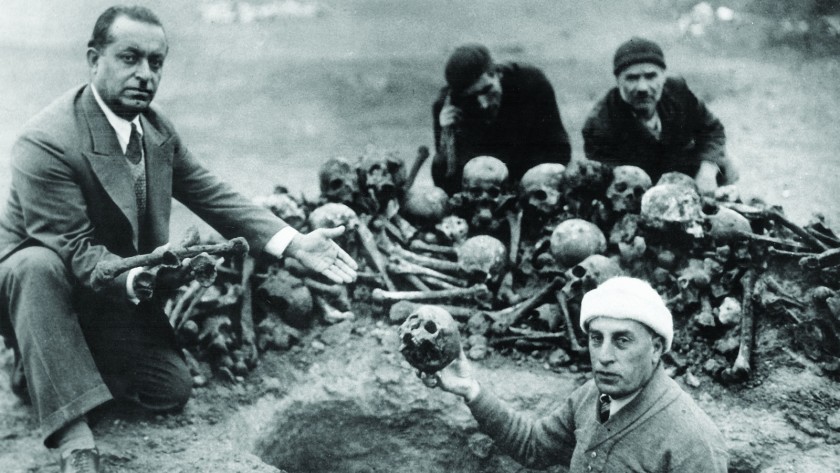
The Armenian genocide continued for several more years, and some scholars describe the atrocity as spanning the years of 1915-1923. While there is controversy over the total number of Armenians killed, most sources agree that at least one million persons were murdered, and many sources estimate the number to be closer to one and a half million.
Today, more than three million Armenians live in Armenia and surrounding nations. Over sixty thousand Armenians live in the United States, mostly in California. And up to ten thousand Armenians live in the State of Israel, including in Jerusalem.
While we can all immediately agree that the Armenian Genocide was horrific and tragic, how can it be said that an atrocity that — shamefully — is often ignored and little discussed was possibly one of the most important events of the twentieth century? How does the Armenian Genocide “compete” with the Nazi Holocaust, for instance?
Besides the obvious point that the unfathomable destruction of millions of innocent lives in and of itself is extremely important regardless of who the victims were, the simple fact is that if there had been no Armenian Genocide, it is possible that there would have been no Nazi Holocaust. Or, at least, the oppression and destruction of European Jewry could have looked very different. Similarly, many of the other genocides and mass exterminations of the twentieth century (especially in Communist regimes) might not have happened, or at least, not with the same ferocity and “efficiency.” Let me explain.
During World War I, the Germans were allied with the Ottoman Turks. Accordingly, the German government maintained strong diplomatic, military, and economic ties with the Turkish empire. Many of these German diplomats and military officials ardently criticized the Turkish extermination of the Armenian Christians, including Consul Eugene Buge, Max Erwin von Scheubner-Richter, Armin T. Wegner, and others. These Germans thoroughly documented the genocide and sent reports and photographs to their superiors. In contrast, some Germans actually supported the Turkish slaughter of the Armenians, such as German naval officer Hans Humann, who stated:
“Armenians and Turks cannot live together in this country. One of these races has got to go. And I don’t blame the Turks for what they are doing to the Armenians. I think that they are entirely justified. The weaker nation must succumb. The Armenians desire to dismember Turkey; they are against the Turks and the Germans in this war, and they therefore have no right to exist here.”

Regardless of how the Germans during the era of World War I felt about the Armenian Genocide, they carefully documented the atrocity, including the specific methodology used by the Turks. And the younger generation of Germans in the military and/or political establishment were very aware of what happened in Ottoman Turkey, including none other than Adolf Hitler. Hitler, who fought in World War I as a German corporal, was very aware of the Armenian Genocide, as were his leading generals and military commanders. Adolf Hitler made the following statement to Reichsmarschall Hermann Goering and his commanding generals in August of 1939, prior to the impending invasion of Poland:
“Our strength consists in our speed and in our brutality. Genghis Khan led millions of women and children to slaughter – with premeditation and a happy heart. History sees in him solely the founder of a state. It’s a matter of indifference to me what a weak western European civilization will say about me. I have issued the command – and I’ll have anybody who utters but one word of criticism executed by a firing squad – that our war aim does not consist in reaching certain lines, but in the physical destruction of the enemy. Accordingly, I have placed my death-head formations in readiness – for the present only in the East – with orders to them to send to death mercilessly and without compassion, men, women, and children of Polish derivation and language. Only thus shall we gain the lebensraum (living space) which we need. Who, after all, speaks today of the annihilation of the Armenians?”

The message from Adolf Hitler to his leadership was clear. They were all well-versed on what the Turks did to the Armenians, and Hitler bolstered the enthusiastic cruelty of his generals by reminding him that the Ottoman Turks suffered little to no consequences for their barbarity. More pertinently, Hitler noted that within the first two decades after the Armenian Genocide, the world had already fallen into cold, apathetic, stony silence.
Similarly, some scholars have noted that many of the tactics used by Nazi German forces in the Holocaust mirror those developed by the Ottoman Turks. And these same methods of mass murder were documented in great detail by various German military and political officials and sent back to Berlin and beyond, usually expressing sharp criticism. But ultimately the objections were largely ignored for personal concerns: political alliances, financial investments, military promotions, diplomatic appointments, etc. And Hitler and his Nazi leadership instead had a plethora of materials to draw upon for inspiration for their own “Final Solution” to the alleged “problem” of their Jewish population and other despised minorities. In other words, the largely ignored documentation of the Armenian Genocide by the Germans of World War I inadvertently provided a detailed set of blueprints for the Nazi Germans of World War II. And Adolf Hitler and his Nazi “SS” followed these “blueprints” to the letter, including confiscation of assets, deportation, death marches, mass starvation, concentration camps, gassing, burning, and railroad transportation in cattle cars. Hitler and the Nazis are usually given credit erroneously for the creation of these heinous methods of mass murder. In reality the Ottoman Turks developed these extermination techniques; the Nazi Germans merely copied them.

Rabbi Elazar and the Midrash (Jewish traditional literature) state, “He who is compassionate to the cruel will ultimately become cruel to the compassionate.” The example of the Biblical King Saul is used. In I Samuel 15, King Saul disobeyed the direct commandment of the Almighty and did not fully destroy the Amalekites, an evil terrorist-like tribe that actively engaged in unprovoked acts of genocidal violence against their neighbors. Later, however, Saul did murder the kohenim, or Levitical priests serving in the Mishkan, or Tabernacle (I Samuel 22). Saul and his sons also apparently later launched their own small genocide against Israel’s peaceful allies, the Gibeonites (II Samuel 21).
The premise presented here in the Tanakh (Bible) and expounded upon by the Midrash and rabbinical commentary is that the first step towards practicing evil is apathy to evil. If we allow others to mistreat, oppress, and engage in evil acts against others, it is only a matter of time before we ourselves become comfortable with evil. And if we become comfortable with evil, or if we begin to adopt such thought processes as “the end justifies the means,” eventually we will actually practice evil ourselves, harming others and destroying our world.
Another lesson that we can derive from the Biblical story of King Saul and the Midrashic interpretations thereof is the long-term effects of being “compassionate to the cruel,” and otherwise allowing evil to persist and prevail. Despite the Most High’s clear command, King Saul allowed Agag, the king of Amalek, to remain alive for a certain period of time until ultimately Samuel the prophet executed him. The Midrash indicates that, one way or another, King Agag of Amalek was enabled to impregnate a woman before his delayed execution. The Biblical evidence for this idea can be found in the scroll of Esther. Esther 3:1 tells us that Haman, the Persian viceroy and arch-enemy of the Jewish people, was actually an “Agagite,” meaning he was of the surviving royal family of King Agag of Amalek. Because King Saul had disobeyed the Holy One, Blessed Be He, the royal family of Amalek survived to launch yet another genocide against the Jewish people more than half a millenium later. Coincidentally, the Jewish leaders ultimately responsible for Haman’s downfall (with Divine assistance) were Mordechai and his relative, Esther, adopted as his daughter. Esther 2:5 informs us that Mordechai (and therefore also Esther) were of the tribe of Benjamin, and of the same family and lineage as King Saul himself. In other words, because King Saul was compassionate to the genocidal Amalekite royal family, that same Amalekite royal family would survive to again strive to completely destroy the Jewish people centuries later. And it was the descendants of King Saul that were enabled by the Most High to end the genocidal tyranny of the Amalekite royal family of Agag once and for all.
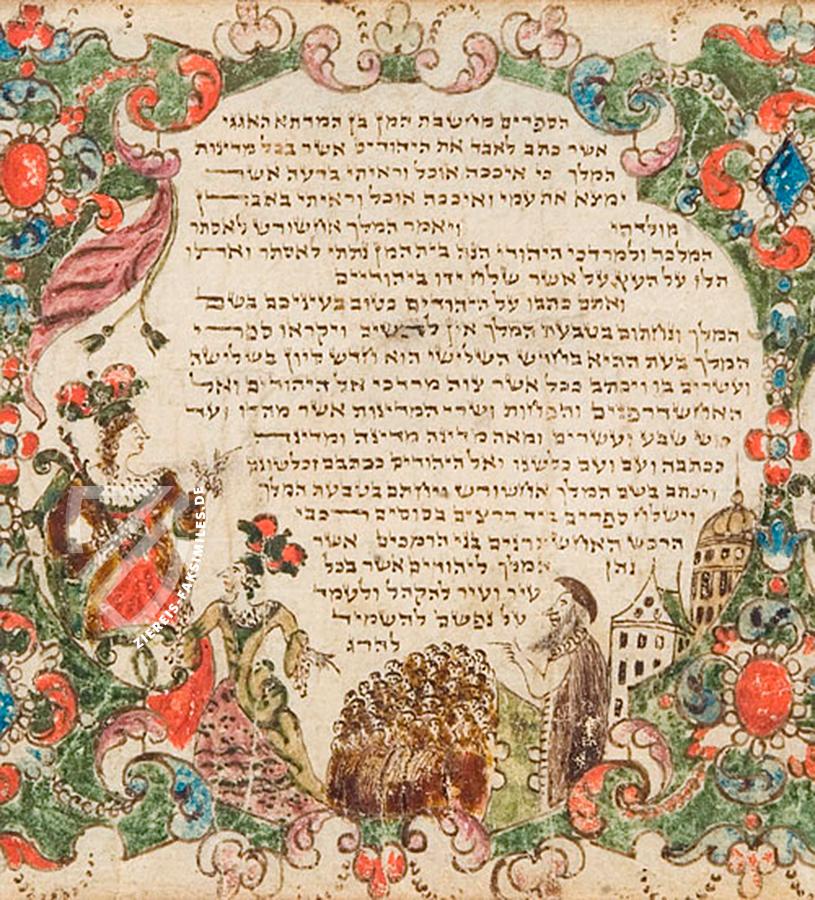
In a similar sense, we see that the western world is guilty of the same crime as King Saul of the Bible. The western world chose to be “compassionate to the cruel,” ignoring the Armenian Genocide and all but forgetting about it entirely. Little was done to provide justice for the Armenian victims against the Turkish government. And even now many nations and entities are hesitant even to properly recognize the Armenian Genocide due to complex political considerations. But it was exactly this type of misplaced compassion and inappropriate apathy that invigorated the Nazis to launch their genocidal military campaigns and “Final Solution” of the Holocaust. And it was the turmoil of World War I and World War II that motivated the western world to turn a blind eye towards Communist Soviet atrocities, partnering with them as the Allies. And this partnership assisted the Soviet Union in their rise to prominence after World War II, resulting in the Cold War and numerous examples of Communist-sponsored oppression and even further genocide.
The twentieth century was by far the bloodiest and most destructive century in known human history. Yet many of us are unaware that indifference to the suffering and murder of the Armenians could arguably have been a vital factor in invigorating the monstrous actions of the Nazis and other regimes. Similarly, the slaughter of the Armenians was the first “modern” genocide, in that it was the first time twentieth century industry and technology were used as a means of mass extermination. The Ottoman Turks pioneered the “modern genocide,” using advanced medical science, railway transporation, and contemporary weaponry. It was also the first time a genocide had been recorded in a plethora of detailed photographs. Despite such evidence, the western world looked the other way, rather than take a stand against the cruelty of the Turks. And since then, the Nazi Germans and numerous other regimes have borrowed the Ottoman Turkish “blueprints” on “modern genocide.” The Germans learned from the Turks how to commit genocide; the Nazis knew from the Turks’ example that they could effectively kill millions of people in a relatively short period of time, and presumably get away with it.
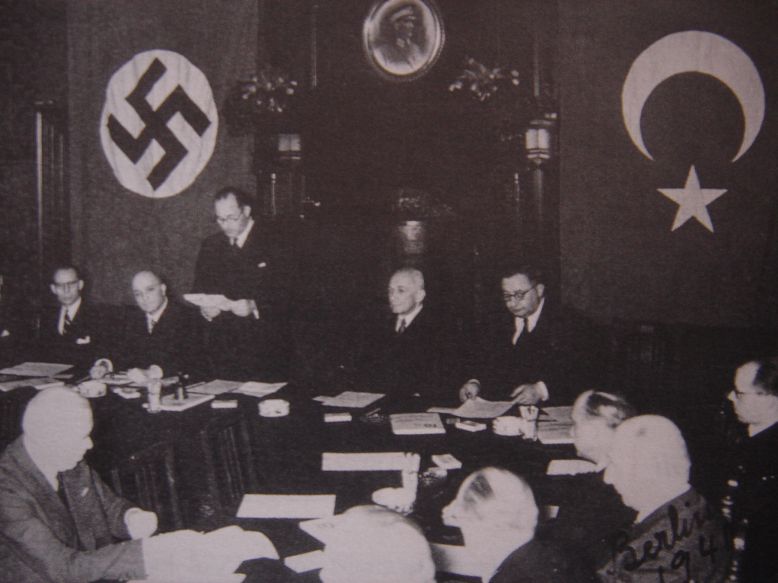
Armenian Genocide Remembrance Day occurs on April 24th, near Yom HaShoah, or Holocaust Memorial Day. In many cases, the Jewish community fixates on our own experiences with mass extermination, and we are seemingly not always fully aware that we as Jews do not hold a monopoly on genocide and suffering. During this season of memorial, I would encourage all persons, Jewish, Armenian, and otherwise, to do their part in ending the ignorance and apathy towards all oppressive violence and genocides. While “never again” is a popular catch-phrase, effort and education is required to ensure that no other genocides arise out of the apathy that has often followed many of the genocides throughout history. May the Holy One, Blessed Be He, grant us all to maintain a global condemnation of any kind of genocide or similar tyranny, and may we never witness or experience such atrocities as the Armenian Genocide or the Nazi Holocaust ever again.



